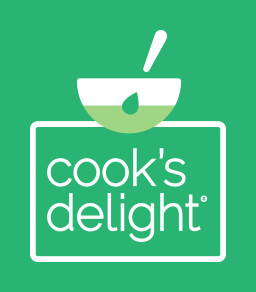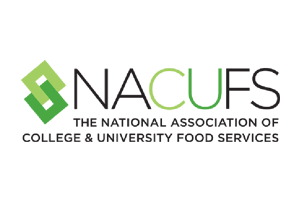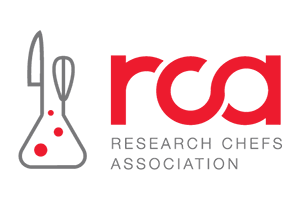Celebrate Safely – Cooking Your Special Foodservice Menu for a Holiday Crowd
New Recipes, Menus and Food Safety
The holidays are a special time for foodservice. They are a time to prepare a menu that allows for creativity combined with traditional fare. Since the recipes being prepared are not the standard recipes used throughout the year, it is of utmost importance to review and monitor food safety. During the planning stages of the holiday menu, the foodservice team should take a risk-based approach in performing an analysis to identify any food safety concerns from purchasing needed ingredients to storing leftovers. Evaluate conditions, practices or other factors that can contribute to a food hazard that may result in a food borne illness.
Celebrate Safely – Cooking Your Special Foodservice Menu for a Holiday Crowd (PDF)
Purchasing Ingredients and Storage
Do your food vendors have the ingredients for your special menu?
Will you need to find an alternate vendor? If so, take into account the time needed to secure a vendor that meets your approval for providing safe, quality ingredients.
How will the food that you purchase need to be stored?
Do you have enough refrigeration and freezer space to safely store ingredients?
Keep in mind that freezers should be kept at 0°F or below and refrigeration units need to be at 40°F or below. Keep space between items in cold storage for air circulation.
To prevent the potential for food-borne illness, store RTE (Ready-to-Eat) foods away from raw foods. Monitor the area around raw foods for any drippings. Keep it cleaned and sanitized.
Cross contamination can occur from allergenic ingredients. It is important to have separate storage to keep allergenic ingredients away from non-allergenic ingredients. If storage is limited, store allergenic ingredients below non-allergenic ingredients on racks, not above. The Big 8 Allergens are Soy, Dairy, Wheat, Eggs, Fish, Crustaceans, Tree Nuts and Peanuts.
Thawing or Tempering Food Safely
Make sure that you allow adequate time to thaw food properly. If not, you risk introducing pathogens to your meal resulting in foodborne illness for your guests.
The best way to thaw frozen food is by tempering it in a refrigerator that is maintained at 40°F or less. Allow 24 hours of tempering for every 5 lbs of a large frozen item, like turkey. If your refrigerator is colder than 40°F, allow more time to temper your food.
According to the USDA, food can also be safely tempered by thawing in cold water. This method is faster than tempering in a refrigerator and requires more attention. It also might not be viable if the volume of food that needs to be thawed is larger than the sinks available. Be sure to keep packaging intact and leak-proof. If packaging is not secure, bacteria can be introduced into the food from the air or surrounding environment. Keep in mind that bacteria present on raw poultry can contaminate you, your utensils and your workspace. Be sure to wash your hands and keep your workspace and utensils clean.
Submerge the food in cold tap water. Change the water every 30 minutes while the food continues to thaw. 1-2 lbs. will take about an hour or less. 3-4 lb packages could take 2-3 hours. For whole turkeys, estimate 30 minutes per lb to thaw completely. After thawing, store immediately in refrigeration until ready to cook. Clean and sanitize the sinks and surrounding area.
NEVER THAW FOOD ON A COUNTER.
Prepping Food
- Proper food handling is of the utmost importance in prepping food.
- Following Good Manufacturing Practices (GMPs) will ensure that you are handling food properly.
Personal Hygiene
- Any facial or head hair must be covered.
- Proper hand-washing should be used.
- Food handlers should wear clean outer garments and no jewelry, perfume or fingernail polish.
Food Prep Area
- Make sure to avoid cross contamination. Store raw ingredients and allergenic ingredients separately.
- Use properly washed and sanitized equipment.
Keep all workspace including counters, sinks, and cook surfaces clean and sanitized.
Ingredients
- Follow Time-temperature Controlled for Safety (TCS) measures for foods that are more likely than others to become unsafe.
- All food should be stored at the proper temperature during the entire process–from receiving the ingredients from your vendor to storing leftovers after the meal.
Cooking and Serving
- Time, temperature and hygiene play the key roles in food safety for cooking and serving.
- All foods should be cooked to the proper internal temperature. Temperatures should be taken with a calibrated stick thermometer. Take the temperature at the thickest part of the meat and do not touch the bone. When cooking poultry, the cook temperature is 165°F. If you are stuffing a turkey, do so right before cooking. The internal temperature must reach 165°F to prevent bacteria from surviving.
- When serving food, be aware of the danger zone 41°F to 135°F. This is the temperature zone where bacteria has the opportunity to grow to unsafe levels. If you need to cool a food after cooking, the FDA recommends that foods are cooled from 135°F to 70°F in 2 hours and to 41°F in 6 hrs.
- Cold foods should be held below 41°F. Keep foods cold by using small serving trays and replacing often or putting on ice. Hot foods should be held over 135°F. You can keep food hot by using a chafing dish with heat, warming trays or slow cookers.Foods should not sit at room temperature for more than two hours. Be sure to keep track of how long your food is at room temperature. Discard anything over two hours.
Storing Leftovers
- The USDA states that you should refrigerate perishable foods within 2 hours in shallow storage containers and not leave them out to prevent food borne illness.
- You can store cooked turkey, other dishes and gravy 3-4 days wrapped tightly.
- Freezing at 0°F or below can prolong the life to 4 months.
Enjoy your wonderful foodservice experience for the holidays—remember time, temperature and hygiene and your guests will have a delicious and safe experience.
Big 8 Allergens – Do You Have an Allergen Plan?





